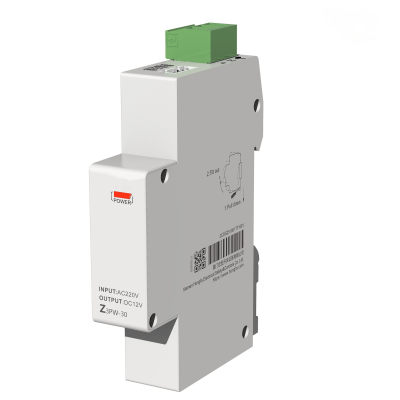With its special working mode and structural features, flyback switching power source has been the first choice for many application situations in the field of power source design. The benefits and drawbacks of the flyback switching power source will be thoroughly discussed in this paper together with a thorough technical reference for designers.
Benefits and Drawbacks of Flyback Switching power source

Z3PW Power Source
1 The flyback switching power source produces lower output characteristics for voltage and current than does the forward switching power source.
During the moment the control switch is turned on, the flyback switching power source does not give the load power output. To supply output to the load during the period when the control switch is turned off, it only changes the stored energy into reverse electromotive force. On the other hand, the average value of the voltage output by the secondary coil of the transformer is roughly equal to half of the maximum voltage when the duty cycle of the control switch is 0.5; the current flowing through the load is exactly equal to one-quarter of the maximum current of the secondary coil of the transformer. That is, the voltage ripple coefficient is equal to 2, and the current ripple coefficient is equal to 4. Though the current ripple coefficient is double that of the forward switching power source, the voltage ripple coefficient of the flyback switching power source is almost the same as that of the forward switching power source. Flyback switching power source’s output characteristics for voltage and current show to be worse than those of forward switching power source. Particularly when the flyback switching power source is utilised, the duty cycle is usually smaller than 0.5 to minimise over-voltage shock of the power switch tube. At this time, the current flowing through the secondary coil of the transformer will be intermittent, the ripple coefficient of voltage and current will increase, and its output characteristics of voltage and current will become worse.
2 The flyback switching power source has somewhat weak transient control qualities.
Since the flyback switching power source only provides energy output to the load during the switch off period, when the load current changes, the switching power source cannot immediately respond to the output voltage or current, but needs to wait until the next cycle. By means of the output voltage sampling and width control circuit, the switching power source starts to react to what has passed, therefore altering the duty cycle. Therefore, the transient control characteristics of the flyback switching power source are relatively poor. Sometimes the output voltage of the flyback switching power source may jitter when the frequency and phase of the load current change match the delay characteristics of the voltage output by the sampling and width modulation control circuit. Most likely, this scenario arises in the TV’s switching power source.
3 The working efficiency of the flyback switching power source transformer is low and the leakage inductance of the main and secondary coils of it is rather significant.
The iron core of the flyback switching power source transformer generally needs to leave a certain air gap. On the one hand, it is to avoid, from too high current flowing through the transformer’s primary coil, the iron core of the transformer from readily causing magnetic saturation. Conversely, since the transformer’s output power is low, the air gap of the voltage regulator must be changed as well as the number of turns of the main coil to modify its inductance. Consequently, the leakage inductance of the main and secondary coils of the flyback switching power source transformer is rather large, which will lower the working efficiency of the switching power source transformer; additionally, the leakage inductance will produce back electromotive force, which is easy to break down the switch tube.
4 The advantages of the flyback switching power source are that the circuit is relatively simple and the volume is relatively small. The flyback switching power source’s modulation amplitude is far higher than that of the forward switching power source output voltage.
The advantages of the flyback switching power source are that the circuit is relatively simple, and it uses less than a large energy storage filter inductor and a freewheeling diode than the forward switching power source. Simultaneously, the flyback switching power source has a smaller volume than the forward switching power source and the cost is likewise less. Furthermore considerably greater than the forward switching power source is the modulation amplitude of the flyback switching power source output voltage. Consequently, the flyback switching power source calls for quite low error signal amplitude of the duty cycle control as well as a limited gain and dynamic range of the error signal amplifier. Flyback switching power sources are still somewhat common in the sector of home appliances due to their benefits.
5 Flyback switching power sources are mostly used in occasions with low power or multiple outputs.
6 Flyback switching power sources do not require magnetic reset windings.
When the switch tube is turned off in a flyback switching power source, the transformer energy storage of the flyback converter releases to the load and the magnetic core is naturally reset without any magnetic reset procedures needed.
7. In a flyback switching power source, the voltage regulator has both the function of energy storage and the function of voltage transformation and isolation.
In low-power and multi-channel output applications with its benefits of simple circuit, small size and low cost, flyback switching power source finds a place. It is impossible to overlook, nonetheless, its constraints in voltage and current output characteristics, transient control features and transformer efficiency. Designers should give these elements thorough thought and select the best power source system.
Post time: 7 月-17-2024


